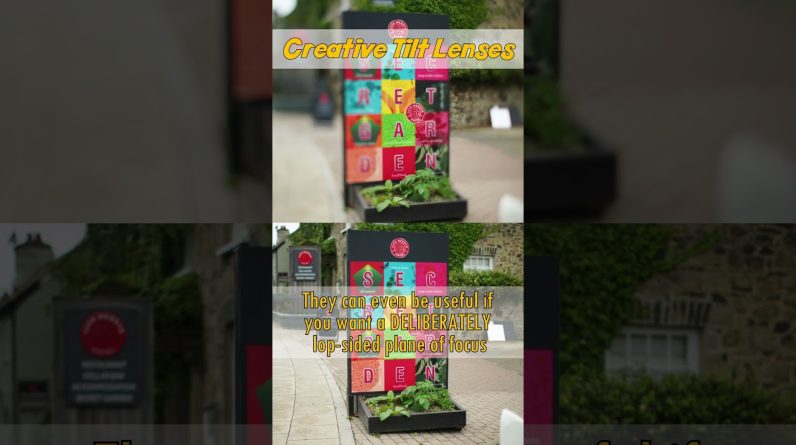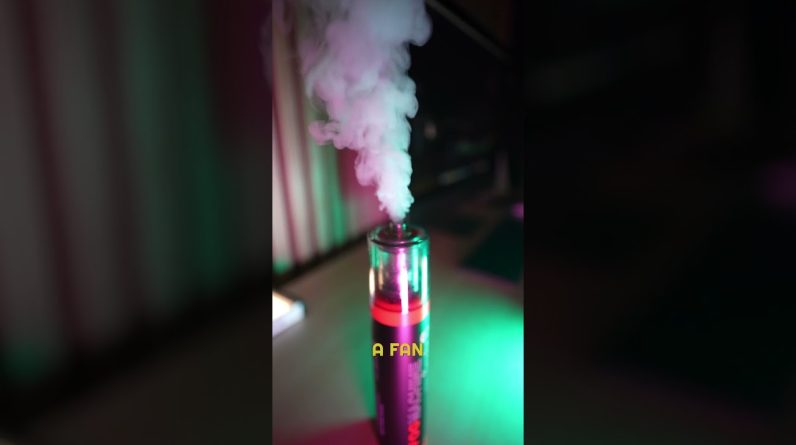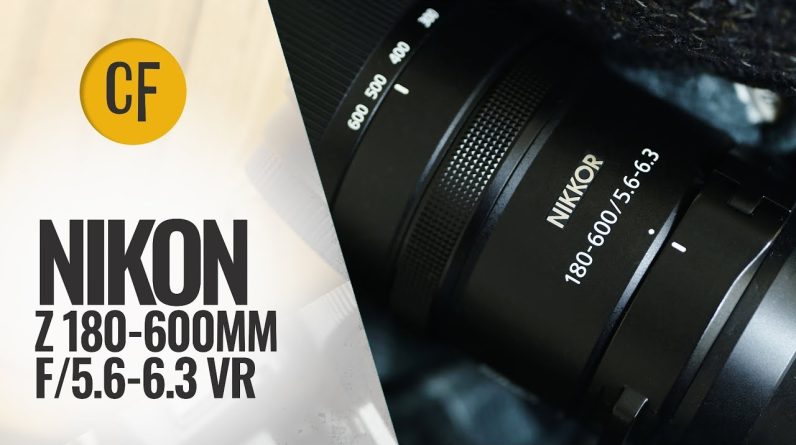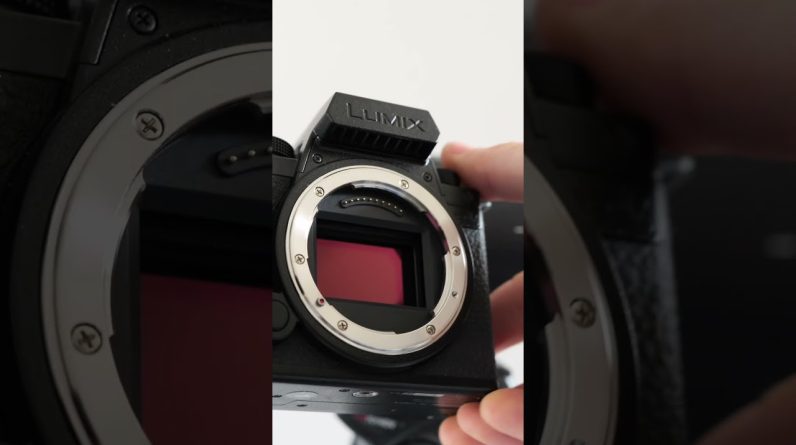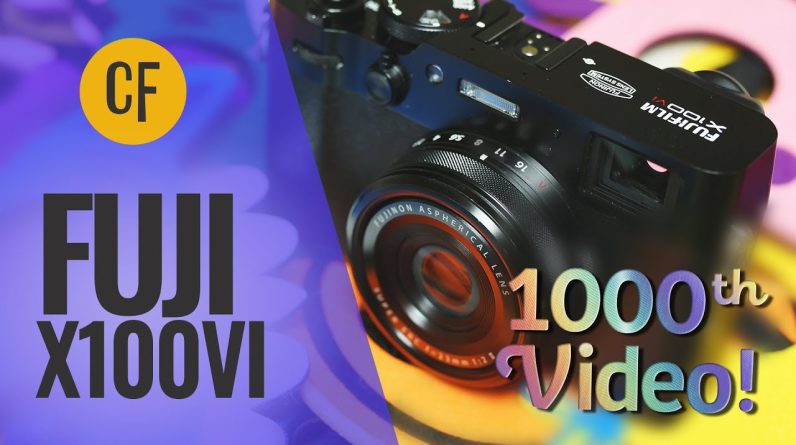The Canon R6 Mark II is a great camera. Let’s get undone. (upbeat music) ♪ Gerald Undone ♪ ♪ He’s crazy ♪ What’s happening, everybody? I’m Gerald Undone
and it’s Morbin’ time. So for disclosure, Canon
did not sponsor this video. In fact, they didn’t
even send me this camera. Instead, I borrowed it and
this lens from Camera Canada. So big shout out to them. They’re a great store for camera gear And they always help this
channel out when called upon. This video does have an
actual sponsor though And that’s Nebula and their
partner, Curiosity Stream. So I’m a big fan of this
R6 Mark II from Canon. It’s not perfect of course, It still has some classic Canon annoyances Like how your histogram
and level turn off when You start recording,
the custom white balance Tool that’s straight out
of 2002 where you have to Take a photo to set a custom
white balance in video. I’m also still annoyed that the camera Turns off when you open the card door, So hot swapping is impossible And I think they might
be the only camera brand That’s still putting micro HDMI ports In their full size bodies,
which is atrocious. But if you can move past those annoyances, You’re left with a terrific
camera for both photo and video. But let’s focus more on
the video side today. Regarding build and ergonomics, It’s pretty standard for
Canon, which is good. I find it intuitive and easy to use.
I like that there’s a
dedicated photo video toggle That’s not tangled up
with the power switch, Although is it just me, Or does Canon seem to have
a new power switch design On every camera they’ve made recently? This one is fine, it just
took some getting used to. The hand feel is good The menus are familiar and
the touch screen is fantastic. There are a couple of new
additions to that menu Though, this camera now has
focus breathing correction, Although it’s only available for a couple Of lenses at the time
of recording this video. I also noticed the anti
flicker shooting option Is now available for
video and not just photo, Which I don’t think was the
case on the original R6. It works well by letting you
set a custom shutter speed With more granularity to
combat flickering lights And it even has an
automatic detection method. Nice inclusion. There’s also some changes
regarding overheating. This camera does not
have the high temperature Setting we saw in the R3 so you’re stuck With whatever threshold this
camera is set to natively. But they did add this
new temperature display, That has several bars that increase As the camera gets hotter.
Definitely more informative And useful than the previous system. Now when it comes to overheating, I had no issues at all
with the 4K24 or 4K30. I was able to record For two hours and 16 minutes
before the battery died. And that was just one
long continuous clip, As the R6 Mark II has no 30
minute limit, which is great. And during that time the temperature gauge
Didn’t even show up. However,
when recording in 4K60, I only got 42 minutes
before the camera overheated But this is actually in
line with Canon’s marketing. They claimed it would get 40
minutes and I was able to. So no harm done, And I think 40 minutes
continuous is probably more Than enough for most people’s 4K60 needs. And if you’re just recording
shorter clips with pauses In between, the camera didn’t
overheat for me at all. And even if you overheat it at 4K60 The 4K24 is still usable And the camera actually
cools down when in this mode. 4K60 is much harder on the battery though, One of those 40 minute runs will use Up about half of your battery So expect under 90 minutes
runtime total in that mode. And as far as cool down, I let it sit For three minutes after
the 40 minute 4K60 clip, And at which point I was able to record For another 15 minutes
before it overheated again. And then for extending a battery life You do have a USB-C
port for power delivery Which works well to vastly
expand your runtime. You can also use this for charging, But I found it rather slow compared To some other brands that I’ve tested. Now when it comes to recording modes, This camera is more stripped down Than some other models in Cannon’s lineup. There’s no internal raw recording And no all-intra modes either. You just have IPB recording,
but only in 16×9. So there’s no DCI recording
or true 24p frame rates. Max frame rate for 4K
is 60 frames per second
And it’s 180 FPS in 1080p. However, that 60 FPS is impressive. First off, it’s completely oversampled From the 6K sensor just
like the 24 and 30P, But there’s no added crop. So you’re framing in detail is identical Whether you’re shooting
24 or 60, I love this. This is fantastic, and because There’s extra resolution to work with, You can switch into an APS-C mode as well, Which is nice to have.
However, the best part Of all of this is that
the rolling shutter is Quite good considering the
oversampling and uncropped 4K. In full frame, I measured
the rolling shutter At 15.9 milliseconds Which is great considering
what we’re getting. For comparison, that’s
nearly twice as fast As the original R6, much
faster than the Sony a7 IV, Which comes in at around 26 milliseconds And about on par with the R5,
so this is a great result, And in APS-C mode, it’s
even faster of course Measuring it at 9.9 milliseconds. Now there are some quirks
you should be aware Of regarding actually
recording these files. First, while you can record externally Over HDMI with a proper 4K clean feed, You can’t record internally and
externally at the same time. If you disconnect the HDMI, You can do backup recording internally To the two SD cards if you
wish, which is appreciated. But just like on previous Canon cameras, The auto switch function
for relay recording is bad. So if you’re trying to double
your capacity with two cards, You should know that
when one card fills up,
It doesn’t keep recording
automatically to the other card. All it does is queue
up the second card, but You have to press the record
button again to have it resume. And like I said, you can’t
swap out fresh cards either Without the camera turning off As soon as you open the card door. Also, the camera does output 10 bit, But only when using Canon Log 3, The rest of the picture
profiles are all eight bit. C Log 3 is also the gamma
with the most dynamic range On this camera, but I
definitely wanted to measure it Because it was quite lackluster On the original R6 to be honest. So I busted out the Xyla 21
and according to Imatest, A total of 12.2 stops were detected. That’s the number here
next to slope based DR. And then if we account for
noise, we get a score of 11.1. That’s where a signal noise ratio of two Meaning good, clean stops. So while this is an improvement of About half a stop over the original R6, It’s still not an impressive result. For comparison, the a7 IV scores a 12.8 In the medium category with a
total of 14.7 stops detected. This is with the noise reduction option On the R6 Mark II turned off by the way, You might be able to get a slightly Higher medium score by
enabling that noise reduction But it’ll never exceed 12.2. I think what we’re seeing
here is a limitation In conversion bit depth from Canon, And maybe the implementation
of Canon Log 3. I believe Canon only uses a 12-bit process In these cameras instead of
a 14 or 16-bit conversion
Into a more preferred Canon Log 2. I believe that’s the bottleneck. And because there’s no internal raw, You can’t change gammas in post. But even if you could, Again, that bit depth would
likely be a limitation. That’s why I don’t imagine
you’ll see a huge improvement Using the ProRes Raw on this
camera, which is available Via HDMI, but I believe
that’s spec’d at only 10 bit In full frame and 12 bit in APS-C. And this could even account For the improvement in read speed. The Fuji cameras for example Read much faster in 12 bit mode Than they do in 14 bit, but
sacrifice dynamic range. So I think this illustrates
the biggest difference In concept between this
camera and the Sony a7 IV. But if we look at the graph here, it looks At the shadows are just chopped
off below a certain point. This is corroborated by the low 1.0 score Matching the total stops of 12.2. Usually we like to see a
patch range that’s higher Than the 1.0 score
indicating that there’s still Some noisy stops in the
shadows that can be recovered. But that isn’t the case here. There’s only the 12 stops regardless Of what you do in the shadows. So how is that noise
anyway? Well, it’s decent. You can get great results up to ISO 12,800 And even a little over, but how you expose Plays a big role here,
which is another reason Why I’m not a huge fan of Canon Log 3. If you plan to follow by
the book exposure practices For C Log 3, you have to
expose middle grey down
At around 32.8 IRE I believe, Which is much lower than in Canon Log 2. And if you have a moody
shadowy shot, this can result In pulling up a bunch of
noise with the shadows. Not a big deal If you’re shooting outside
in bright sunlight, but If you plan on shooting moody
interiors and want to use log, I recommend overexposing
by at least a stop Maybe even two stops If you want to turn the noise
reduction off in the camera. Now when it comes to
dialing in that exposure, Canon gives you zebras, which is nice But they’ve also added
false color in this camera Which is an appreciated inclusion. Definitely makes exposing
to a gray card very easy. Oh, also keep in mind that on this camera And a lot of other Canon cameras
that you’ll get less noise If you stick to full stops of ISO Instead of one third increments. So ISO 1600 is cleaner than
1250 and ISO 3,200 is cleaner Than 2,500 and so on. Color on this camera is terrific. And if you do use C Log 3,
set the color to Cinema Gamut, Which will allow you to use
Canon’s official C Log 3 Cinema Gamut to WideDR
LUT, which is excellent. And actually if you’re
using DaVinci Resolve, The color space transform For that combination works great too And is even slightly more color accurate. Just doing a bit of an audio test here. I’ve got a RODE VideoMic
NTG plugged in directly Into the microphone port on
the camera mounted on top And then I’ve got my
headphones plugged in as well. And this is the distance that I’m talking
To the microphone and
it sounds good. You can set the gain manually. So I have it set to the lowest plus one. So we’ll get sort of like
the base noise floor here In this configuration. And I’ll just be quiet for a second. And then there’s options in there For auto gain and the wind filter If you wanna use the built-in microphone. And then in a different section In the menu there is the
ability to increase the quality Of the audio recording
at an increased bit rate I guess would be the cost.
I dunno if they’re switching Over to LPCM or what they’re doing. But yeah, this is what the audio sounds Like recorded directly
into the Canon R6 Mark II. Now I’m not gonna spend too
much time discussing autofocus. We’re at a point now where it Either passes the reliability
test or it doesn’t. And when it comes to
talking head shots like this You can count on this camera to keep you Or your subject in focus
without anything weird going on. It has several different
subject types that can track And even has an intelligent
auto switching function Between them. And it also has refined controls
for speed and sensitivity. So no complaints there. The only aspect of the
auto focus I don’t like On this camera is the touch
tracking. It’s not very sticky And it often doesn’t do
what I want it to do. So don’t buy it solely for that purpose. Get a Sony instead if
that’s what you need. But if all you need to do is point it At a person and let it track
their eye while they talk,
This camera is mostly
flawless in that use case. In fact, why don’t I
stick it on a tripod next To my main angle so we
can see how it performs For the rest of this
video tracking my face. Alright, lastly, stabilization
is supposedly improved But to be honest, I didn’t really notice a
big difference in video. It still does a great job of
letting you hold static shots At longer focal lengths, but
it also still suffers from some Of that warpy stuff when walking
around with wider lenses. Okay, let’s wrap up. Canon did a fantastic
job with this camera. For full frame cameras in its price range, It’s probably the most compelling option. The closest comparison
would be the Sony a7 IV. And it’s interesting to
see how they trade blows. The Canon pulls out some
big wins when it comes To rolling shutter and the uncropped 4K60 But the Sony is better when
it comes to dynamic range. Not having that 12 stop
limit and being able to Use their best log curve
gives you more flexibility And latitude on the Sony Than you’re gonna get on the R6 Mark II. But then again, if you’re
just using in a studio setting Like this, both provide
adequate dynamic range And you probably won’t
notice a difference. There’s obviously a bunch
more minor differences Between those two cameras, But I don’t often like to compare cameras From different brands because most people Aren’t just switching systems willy-nilly, And when they do, it’s
usually about the lenses Or some other investment
and not the bodies. These days, it feels like
there’s a new camera body
Every few months, But most people hold onto
their lenses for years. And there’s definitely a
strong argument to be made In favor of Sony due to
their continued support Of third party lenses, Which sadly is not something we can say About Canon any longer and in my opinion, That is a terrible anti-consumer
decision that annoys me To no end. But if you’re someone
who only buys first party Lenses anyway, well at least the majority Of Canon’s RF lenses are quite good. So I think what’s more important here is That Canon now has a great answer To the a74 at that price point For users who are invested
in their RF system. But if you truly have no
allegiance either way, And you just really need an answer Between which of those two
cameras to buy, get the Sony Ii you wanna shoot it on a
tripod with more dynamic range And the ability to touch all
the things you wanna focus On and get the Canon If you wanna be able to do
this at 60 frames per second. For most other use cases, get
either one, it doesn’t matter. It’s great. They’re both
great, everything’s great. You know what else is great? The holiday sale going on right now For the Nebula and
Curiosity Stream bundle. Nebula, for those that don’t know, Is a platform that gives YouTubers Like myself a place where we
can host our content ad free Without fear of YouTube
restriction or demonetization. It’s mostly educational or
education adjacent content And features a bunch
of interesting creators
Like Sarah Renee Clark,
Legal Eagle, Real Science And Captain Midnight to name a few. Watching your favorite creators On Nebula supports us directly financially And allows you to watch
the content you enjoy Without the ads of YouTube
or the sponsor reads. In fact, this section of the
video won’t even be uploaded In Nebula, but the most
cost effective way to Get Nebula isn’t to subscribe
to it directly, but instead By signing up for a partner
service Curiosity Stream, Which also happens to be
the best streaming service On the internet when it
comes to documentaries And educational content,
because when you sign Up for Curiosity Stream,
you get Nebula for free. Now, normally when you
use my promo code undone By going to curiositystream.com/undone, Or by just clicking the
link in the description, You’d save an additional 26%
and get both Curiosity Stream And Nebula for just
$14.79 for the whole year. But if you sign up before January 2nd, We’ll bump that discount up To 42% so you can get the
combo for just $11.59 annually. And that bundle deal’s not a trial, You’ll keep Nebula for free for as long As you maintain your
Curiosity Stream subscription. So even if you’re only gonna
use one of the services It’s cheaper to get both, and
I’m certain you’ll find plenty Of content to enjoy and
learn from on both platforms. Thanks for listening.
Alright… I’m done. (upbeat music)
So You Want to Be Beyonce? This Is How You Can Be
An exploration into the habits and ways of thinking which have made Beyoncé one of the greatest performers of all time. Also, one of the wealthiest women in the world.
DIY Original Halloween Costume Tips and Ideas
Many adults have art and craft skills to make their own Halloween or special events costume. Hand or machine stitching, glue, and paste are the basic fasteners. Creativity and imagination are the magic ingredients.
Artistic Product Print Works
In case you have any huge sales coming up later on, I would encourage a similar strategy. Indeed, sports can be a method of networking. For lots of people, it is a second home place to hash out family difficulties, play backgammon, take pleasure in the day’s very first drink.
Acrylic Painting and Prints For Sale
Take pleasure in the painting that you do. Painting with acrylics is a great option for a beginning painter. If you wish to make your painting interesting you must offer enough of variety so the viewer is curious and wants to come back to observe it.
8 Smart Approaches to Crack CAT in Three Months!
Common Admission Test (CAT) is considered as one of the toughest exams in our India. A lot of students prepare for years together to score well in CAT.

